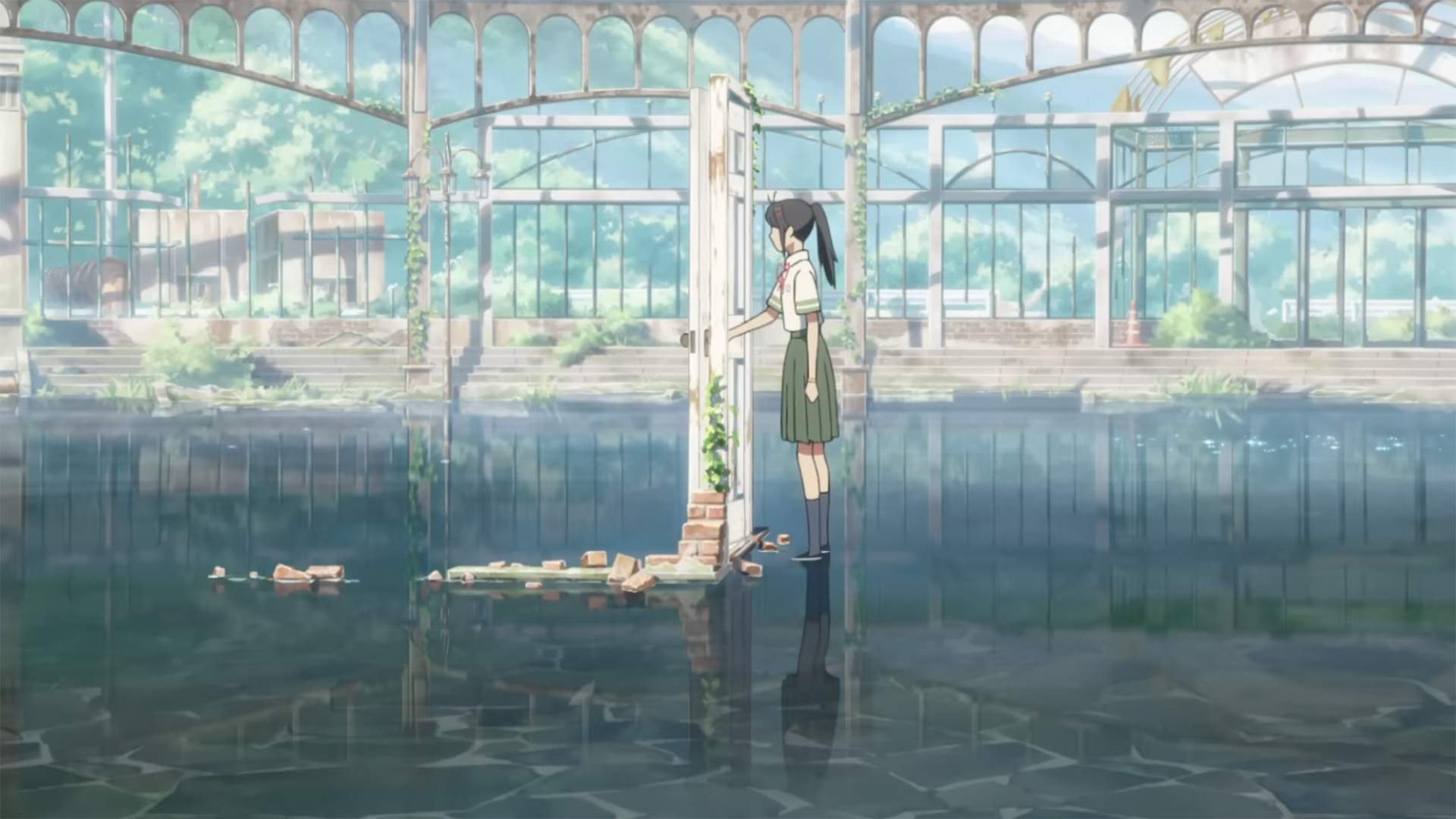Suzume No Tojimari: A Stunning Film With One Door Too Many
Written by Damien Boneham.
I saw Makato Shinkai’s anime blockbuster, Suzume No Tojimari, at the movies last week. There’s some spoilers here so if you’re keen to watch maybe read this one after.
It was a visually stunning piece that really pulled at the heart strings. The work felt familiar, following a similar storyline and aesthetic to his previous critically acclaimed works, Your Name and Weathering With You. It was also strangely familiar to our initial story ideas for Unegen: The Burning Tree; the protagonist meets a stranger at a magical gateway, accidentally unleashes an ancient power, and has to work with this stranger to close other gates before calamity strikes. Laying back in my recliner chair at Event Cinemas George Street, I was glad that we shifted from that direction as it can be a bit over done.
The adventure kicks off when protagonist, Suzume, meets a mysterious stranger named Souta and follows him to an abandoned school. There she unknowingly opens the gateway to another world by setting free the “keystone” that was acting as the stopper between a magical world and earth. This keystone takes the form of a mischievous cat, who turns Souta into an adorable three-legged chair, and runs amok throughout Japan. Suzume and her three-legged chair friend set out on a mission to catch this spirit-cat so they can turn Souta back into a human and stop the cat from opening other gateways.
Suzume follows Souta (transformed into a three-legged chair) on their adventure.
Despite this premise sounding very unique, the film took the whole “gateway to another realm” idea very literally. Scattered throughout Japan there are doors: house doors, industrial doors, sliding doors, glass doors, roller doors; it’s got all the doors. These inconspicuous looking doors act as gateways to a place called “The Ever-After”, a beautiful but dangerous realm where primeval entities are trying to escape and wreck havoc on earth.
The method of closing these doors was straightforward, Suzume and Souta shoved as hard as they could until it slammed shut. Ok, there was a little bit more involved; they had to focus very hard and think of all the people who might get hurt if they don’t close the door, and then quickly shove a magic key into the lock while repeating a chant that went something like “Oh wrathful spirits! Calm your anger and rest”.
They did this at least 3 times.
By the third door closing scene, my recliner chair didn’t feel as comfortable. I felt like I was watching the same action sequence on repeat.
Despite these overly-simplistic and repetitive obstacles, I started to realise that this film isn’t about running around and closing gateways at all. It’s about a young girl who’s desperate for independence and is seeking answers to the trauma she endured as a child. Travelling Japan with a talking chair, and saving the world from catastrophe - all the while trying to dodge calls from her worried aunt, is essentially the outer shell of the inner-turmoil that’s roiling inside Suzume.
Suzume opening a doorway to the “Ever-After”.
Despite the fantasy and magical elements feeling cliche, the characters that Suzume meets on her journey, and the conflict that develops in these relationships is what makes the film engaging. This reinforces a point that I’ve made before in a blog about the HBO series, House Of The Dragon - all the magic and fantasy elements are just sprinkles on a what really is a story about character wants and needs, how these desires create tension, and the aftermath of these conflicts.
Suzume No Tojimari was a great example of using magical “rules” to act as obstacles that challenge characters internally. Simple rules like - “we must secure the keystone so we can close the gateways,” or “you must return to the original gateway you passed through first to enter the new realm” appear as basic plot devices at first - but they end up meaning something else for the characters. For Souta, “securing the keystone” means sacrificing himself for others, and for Suzume, “returning to the first doorway” means facing her inner child and the trauma that is still impacting her life.
This film got me thinking about the balance of the inner and outer journey. On one hand I was deeply invested in Suzume’s need to unpack her trauma and make amends with her loving aunt. On the other hand, the physical obstacles she had to overcome felt repetitive, which meant the writing came across as lazy. Suzume’s outer journey (meaning the action that is taking place on screen) is supported too heavily by her inner journey (her emotional arc and character development).
It was an important reminder that simplicity isn’t always the best way to keep an audience engaged. It was very clear from the start what Suzume needed to do - follow the cat and close the doors, but this challenge needed to evolve just as much as her character did.
Despite these points, I still enjoyed Suzume No Tojimari. It’s a beautiful film which makes for an incredible cinematic experience. I highly recommend you check it out while it’s still on at the movies. Link to the trailer is below.


